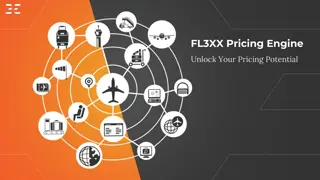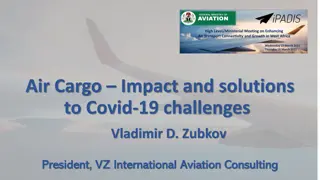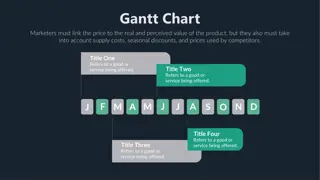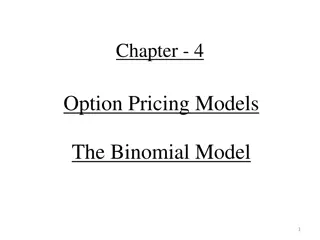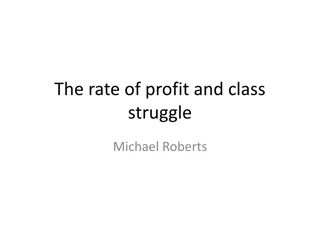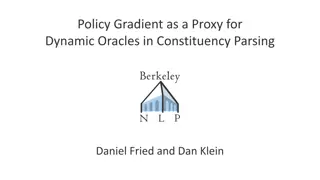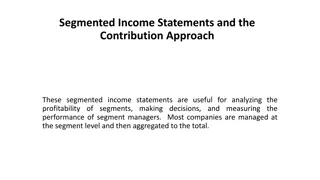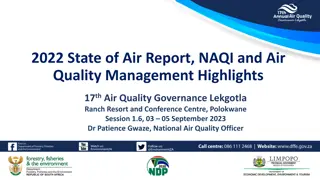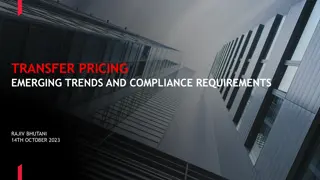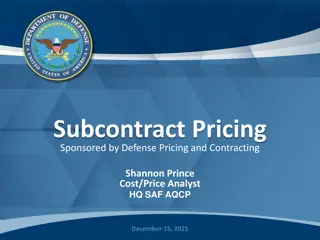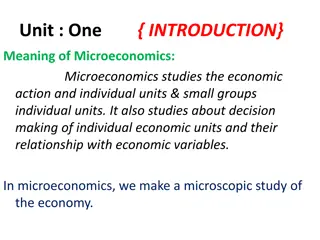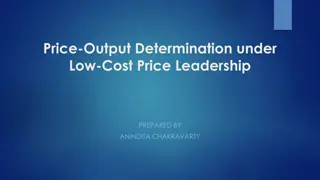Maximizing Profitability with Dynamic Air Cargo Pricing
In the competitive world of air cargo, maximizing profitability hinges on strategic pricing. Dynamic air cargo pricing is emerging as a pivotal tool, enabling airlines to adapt to market fluctuations and optimize revenue. By leveraging advanced techn
Download Presentation

Please find below an Image/Link to download the presentation.
The content on the website is provided AS IS for your information and personal use only. It may not be sold, licensed, or shared on other websites without obtaining consent from the author. Download presentation by click this link. If you encounter any issues during the download, it is possible that the publisher has removed the file from their server.
E N D
Presentation Transcript
In the competitive world of air cargo, maximizing profitability hinges on strategic pricing. Dynamic air cargo pricing is emerging as a pivotal tool, enabling airlines to adapt to market fluctuations and optimize revenue. By leveraging advanced technologies and sophisticated algorithms, Revenue Technology Services is at the forefront of this transformation, helping airlines enhance their pricing strategies to achieve greater profitability. Understanding Dynamic Air Cargo Pricing Dynamic pricing is a strategy that adjusts prices in real-time based on various factors such as demand, capacity, competition, and market conditions. For air cargo, this means moving away from static pricing models and embracing a more flexible approach. This flexibility allows airlines to respond quickly to changes, ensuring that they can capture maximum value from every shipment.
The Role of Technology Revenue Technology Services utilizes cutting-edge technology to implement dynamic air cargo pricing. Machine learning algorithms and big data analytics play crucial roles in this process. By analyzing historical data, market trends, and real-time information, these technologies can predict demand fluctuations and recommend optimal pricing. This data-driven approach ensures that pricing decisions are based on accurate, up-to-date information. Benefits of Dynamic Pricing 1.Increased Revenue: By adjusting prices based on demand and market conditions, airlines can optimize their revenue. High- demand periods can command higher prices, while lower-demand times can be used to fill capacity with competitive pricing. 2.Better Capacity Utilization: Dynamic pricing helps airlines balance their cargo loads more effectively. By offering attractive prices during off-peak times, airlines can ensure better utilization of their cargo space, reducing the likelihood of empty flights. 3.Enhanced Competitiveness: Airlines that adopt dynamic pricing can respond more effectively to competitive pressures. They can adjust their rates to match or beat competitors, ensuring they remain attractive to customers. 4.Improved Customer Satisfaction: With dynamic pricing, airlines can offer more tailored pricing options to their customers. This flexibility can lead to higher customer satisfaction, as clients feel they are getting the best possible deal.
Implementing Dynamic Air Cargo Pricing Successful implementation of dynamic air cargo pricing requires a strategic approach: 1.Data Collection and Analysis: Airlines must invest in robust data collection systems. This includes gathering historical data, monitoring market trends, and tracking real-time information. Advanced analytics tools are then used to interpret this data and generate actionable insights. 2.Integration with Existing Systems: Dynamic pricing solutions should be seamlessly integrated with existing cargo management systems. This ensures smooth operations and avoids disruptions. 3.Training and Support: Airline staff must be trained to understand and utilize dynamic pricing tools effectively. Ongoing support from technology partners like Revenue Technology Services is crucial to ensure successful adoption and continuous improvement. 4.Continuous Monitoring and Adjustment: Dynamic pricing is not a set-and-forget solution. It requires continuous monitoring and adjustment to respond to changing market conditions. Regular reviews and updates to pricing algorithms ensure they remain effective over time.
Conclusion Dynamic air cargo pricing represents a significant shift from traditional pricing models, offering airlines the opportunity to maximize profitability through more flexible and responsive pricing strategies. By leveraging advanced technologies and data-driven insights, Revenue Technology Services helps airlines navigate this transition smoothly. The result is increased revenue, better capacity utilization, enhanced competitiveness, and improved customer satisfaction. As the air cargo industry continues to evolve, dynamic pricing will undoubtedly play a central role in shaping its future.


